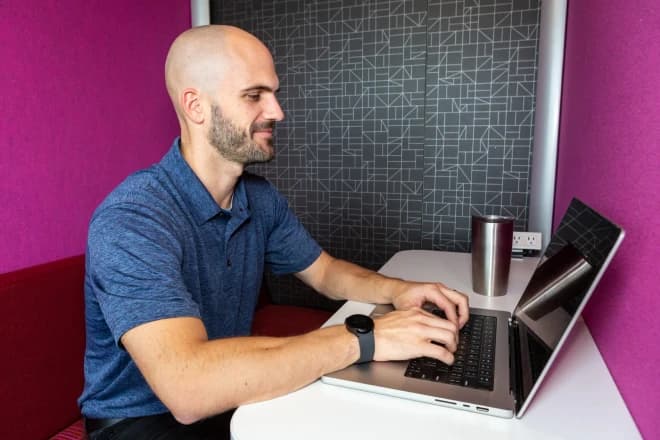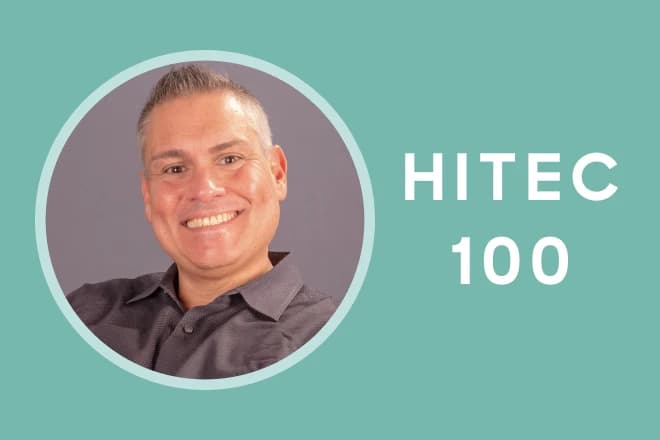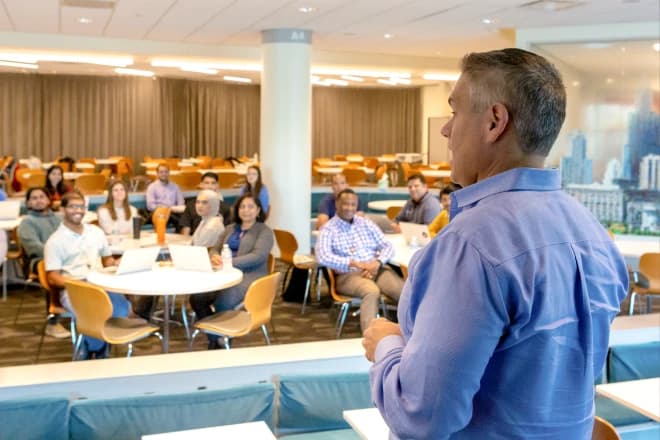At Discover, we've seen how open source has transformed the tech landscape with speed and innovation in the past few decades. We understand its power and possibility, and we are eager to join in contributing back to the projects that we use in our own tech stack. But, like most fintech companies, we must take a measured, thoughtful approach when it comes to consuming and contributing to open source—one that accounts for the compliance and regulatory standards needed to keep financial transactions trusted and secure.
This article examines how Discover leverages our open source and innovation capabilities to allow Discover engineers to learn through experimentation and collaborate within the industry in a risk-mitigated manner.
1. Start with an Open Source Program Office
Having an Open Source Program Office that oversees open source consumption and contribution across the enterprise is critically important. A centralized office can set and enforce consumption and contribution standards, which mitigates risk.
2. Create and publicize clear open source guardrails
Some of our guardrails include:
- Carefully vetted package management system that scans for vulnerabilities and security requirements
- Close alignment with our partners in the legal department for review of any licenses or legal questions
- A clear, detailed, publicly accessible process that is enforced before a team can directly consume code or a package outside the existing package management system
- Defined, easy-to-use process for requesting approval for contributing to an existing project outside of Discover
3. Make room for innovation
Once clear OSPO governance was established, we focused on creating innovation methodologies to guide engineers in their innovation journey. These phases include:
- Discover: Apply design thinking techniques during the ideation process to articulate a vision and solution concept.
- Define: Clearly and concisely define and validate the problem you’re solving for.
- Develop: Quickly develop a minimum viable prototype (MVP) to demonstrate the concepts with industry stakeholders.
- Deliver: After getting outside buy-in and collaboration, go beyond your MVP to deliver a project that has real, measurable value for the business.
With our OSPO in place, clear guidelines around OSS usage, and our innovation methodology defined, we were able to build our first open source project.
A real-world use case of building in the open
Here are the steps we took to move an open source project—the A11y Theme Builder—from an internal idea to a formally recognized open-source project. The ThemeBuilder project is a system for generating machine-readable asset types, allowing design systems to publish products that are accessibly inclusive.
Discover: In the Discover phase, we applied Design Thinking techniques to help with the ideation process. We came up with the idea because we were motivated to better serve the accessibility needs of our employees and customers and to meet WCAG Compliance requirements.
In this phase, we realized that our product development workflows failed to empathize with the challenges that designers and developers face as they struggled to comply with WCAG standards. The Design Thinking process gave birth to the notion of an Atomic Accessibility Design Methodology.
Define: The second phase of our Innovation Methodology focuses on clearly and concisely defining and validating the problem. Through design thinking techniques, we identified several intellectual property opportunities and recognized that we needed to build ThemeBuilder within a toolchain that proactively streamlines the accessibility dependencies for both designers and developers.
An outcome of this phase emphasized that no single company could tackle the problem alone and that we needed a community-driven approach to building the technologies needed to power a variety of toolchains.
Develop: We entered the Develop phase with the intention to quickly develop a minimum viable prototype (MVP) we could use to demonstrate the concepts with industry stakeholders. Because this was the first time Discover engineers had considered building a project for consumption, we worked in tandem with the OSPO as they developed their contribution guidelines. Once our policies were in place, a small team of 4 engineers spent approximately 2 months hardening an MVP.
During this phase, we decided to leverage our new membership in the FINOS Foundation to explore community interest in ThemeBuilder via a FINOS-hosted hackathon. Given the existence of global Accessibility Day awareness events, we decided to develop and execute a plan for the hosting of a FINOS Global Accessibility Awareness Day Hackathon.
Deliver: On May 18th, 2023 (Global Accessibility Awareness Day), our activities culminated in the successful completion of the hackathon. This event welcomed 199 participants from 27 countries competing for 25,000 USD in prizes. These creative individuals also helped to validate the community interest in the Theme Builder.
Project submissions touched on an array of persona needs including consumers, developers, and designers; explored architecture decision options and improvements; and identified toolchain workflow use cases.
This fourth phase of our Innovation Methodology remains a work-in-progress.
Moving forward
This endeavor has helped frame the process and policy gates for future contributions. As part to growing the project, we transferred ThemeBuilder from our closed-source GitHub organization to the FINOS organization which is a proper open source community incubation repository. We are excited to see the project flourish with outside contributions and remain committed to open source at Discover.



